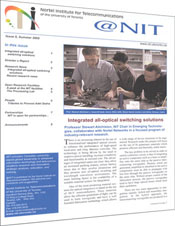
NIT >> Newsletter
@NIT,Summer 2002
Director's
Message
the successful completion of the
Open Research Laboratory facilities
in the new Bahen building ”
We are very fortunate that during these most difficult times for the telecommunications industry, Nortel Networks has continued its support for the NIT and its programs. We are both pleased that Nortel Networks continues to view positively the partnership with the University of Toronto that the NIT represents, and motivated by the responsibility to provide value to our inaugural partners.
The NIT Advisory Council meets several times per year to discuss the University of Toronto/Nortel Networks relationship and to provide strategic guidance to the NIT in the development of its programs. The membership of the Council has recently changed: both because of internal changes at Nortel, and because of the upcoming retirement of Adel Sedra as Provost of the University of Toronto. The new Council members are Ryan Stark and Harold Graham, from Nortel Networks, and Tas Venetsanopoulos (as the Provost’s representative) and Safwat Zaky from the University of Toronto. I am also an ex-officio member.
One of our key objectives for this year is the successful completion of the Open Research Laboratory facilities in the new Bahen building. Much progress has been made towards this objective, thanks to the hard work of many - and in particular Henry Lee - who have dedicated their efforts to planning, coordinating, equipment specification and ordering, and the multitude of tasks that are required to turn our dreams into reality. More on the progress of the Open Research Laboratory facilities can be found on pages 4 and 5 of this newsletter.
Two years ago, we started our very successful NIT Associates program to provide seed research funding to new professors, in order to expand both our research portfolio and to attract new professors to the NIT “family”. A number of present and former NIT Associates - among them Zheng-Hong Lu (Materials Science and Engineering), Stewart Aitchison, George Eleftheriades, Eddie Law, Ted Sargent (Electrical and Computer Engineering), and Greg Scholes (Chemistry) - have gone on to play major roles in NIT activities and programs. The funding for the Associates program comes from our ORDCF grant. With the imminent completion of our Open Research Laboratories, however, this funding must be used for its original purpose - the operation of these laboratories. Although we are actively seeking new funding for the Associates program, we are not at present able to support any new proposals.
One new research area of particular interest to us is biomedical engineering, where some of the technology developed for telecommunications may find new applications. A committee composed of Professors Ted Sargent and Stewart Aitchison is producing a report for the research program committee on opportunities for the NIT in this area, and we hope to soon be able to report progress in our attempts to develop projects in this area.
Another key objective for us is to actively explore new partnerships with the aim of broadening both our research program and our funding support. We have been relying heavily on David MacLean, our Manager of External Relations, to explore opportunities for new initiatives. I am also pleased to announce that Claudine Simson - formerly a member of our Advisory Council - is now assisting us as an External Relations consultant. In recent months, we have had exploratory visits with representatives of a number of industries with interest in the technologies in our portfolio, and we hope in the near future to see some of these initiatives bear fruit.

Integrated All-Optical Switching Solutions
Professor Stewart Aitchision, NIT Chair in Emerging Technologies, collaborates with Nortel Networks in a focused program of industry-relevant research.
 There
is an increasing interest in the use of functionalized integrated optical
circuits to enhance the performance of high-speed local-area and long distance
networks. The technology is being driven by the need to improve power handling,
increase complexity and functionality at reduced cost. The advantages of
integrated optics are clear: they allow an increased packing density, reduce
latency times due to their smaller dimensions and they promise new all-optical
switching and wavelength conversion architectures. The main limiting factor
is the availability of a suitable material system for integration.
There
is an increasing interest in the use of functionalized integrated optical
circuits to enhance the performance of high-speed local-area and long distance
networks. The technology is being driven by the need to improve power handling,
increase complexity and functionality at reduced cost. The advantages of
integrated optics are clear: they allow an increased packing density, reduce
latency times due to their smaller dimensions and they promise new all-optical
switching and wavelength conversion architectures. The main limiting factor
is the availability of a suitable material system for integration.
One of the most promising material systems for optical integration is based on the use of III-V semiconductors. These materials allow the efficient generation of light, can be used to form waveguides and have a well founded fabrication technology which allows a wide range of device structures to be engineered. Research under this project will focus on the use of Al quaternary materials which promise efficient and thermally stable lasers.
The key problem to be solved in order to realize a photonic circuit, is that of integrating an active component such as a laser or amplifier, onto the same chip as the passive interconnecting waveguides. Photons which are generated, amplified or absorbed in the active components must be able to propagate with low-loss through the passive waveguides on the same chip. Without proper control of the fabrication process, the passive waveguides tend to have large optical losses which limit their usefulness.
There are two main approaches to integration, namely: hybrid and monolithic integration. In the hybrid approach, the interconnecting waveguides are produced in a low loss material such as silica and the active components, typically based on III-V semiconductors are positioned onto the chip. The aim of the hybrid approach is to take advantage of the best features of each material.
The monolithic solution aims to realize both active and passive components in the same material system. This is achieved by modifying the absorption properties of the semiconductor so that selective areas with different band gaps can be realized. To date three approaches have been used to produce this type of circuit: etch and re-growth, quantum well intermixing and twin core waveguide structures. All three approached have been used to realize circuits with increasing complexity. Though in comparison to the silicon based electronics industry progress in still at a very early stage and circuits contain only a handful of different elements.
The aim of this collaboration is to develop a program of joint research between Nortel Networks and the Nortel Institute at the University of Toronto, to develop functional integrated switching and logic elements. The research projects will concentrate on the use of quantum well intermixing to control the absorption edge of III-V semiconductors and waveguide design to facilitate the integration of active and passive structures. We will also investigate the nonlinear optical properties of semiconductor optical amplifiers (SOAs) in these materials.
Our research will focus on the integration of SOAs with passive waveguide interconnects, splitters and couplers. In addition to amplifying signals, SOAs can be used to construct a simple all optical switching element. The operation of this type of device arises from changes in the refractive index and/or absorption in the amplifier, as a result of varying the input intensity.
The project forms part of the core research interests of Prof. Aitchison, the holder of the Nortel Institute Chair in Emerging Technologies. “The funding will allow us to develop a focused program of industrially relevant research and will support an increasing number of graduate level research students”.
The realization of integrated optical components will give increased flexibility in the design of new network architectures and allow more efficient and compact devices to be realized. In the longer term, the project will also focus attention on the use of more functional architectures, whereby the electric field is enhanced and the optical power requirements for switching are reduced.
By Professor Stewart Aitchison
Professor Greg Scholes - NIT Associate
Professor Scholes recently received a Research Innovation Award from the Research Corporation for the project “Correlating Optical Response and Dynamics to Structure of Complex Organic Assemblies”
Other recent scientific news from Professor Scholes labs:
- A fourth year undergraduate project student in his group, Karolina Fritz, has learnt how to prepare a new class of hybrid guest-host liquid crystalline materials that they anticipate will pave a new trail to switchable, anisotropic photonic materials based on conjugated polymers.
- A postdoc in his group, Dr. Peggy Hines, has developed nanocrystalline seminconductor quantum dots that have band gaps in the 1 to 2 micron range and are highly photoluminescent. Potential applications of this technology will be cheap telecommunications lasers or sophisicated new kinds of nonlinear optical materials. Professor Ted Sargent and his group are exploring some possible device applications.
- A graduate student in his group, Mayrose Salvador, has used their innovative photon echo spectroscopies to study another type of “quantum dot” material - CdSe. Using a technique accurate to less than 1 femtosecond, she has uncovered a new understanding of the absorption line shape of nanocrystalline CdSe. This is an important step in working out exactly how these materials interact with light.
A Peek at the Open Research Facilities
The first of its kind in Canadian universities, our Open Research Facility is a large, open, integrated laboratory facility to support information technology and telecommunications research and training. It represents a new and substantial research capacity for university-based, large-scale, exploratory telecommunications research. These facilities are available to any researchers having need of the specialized equipment and operational expertise.
Part of the $105 million Bahen Centre for Information Technology, the Open Research Facility provides first-class research infrastructure, including 900 square metres of cleanrooms, network architecture testbeds, microwave/wireless and antenna research facilities, microetching capabilities, and a conference and information exchange room where NIT researchers and partners can meet.
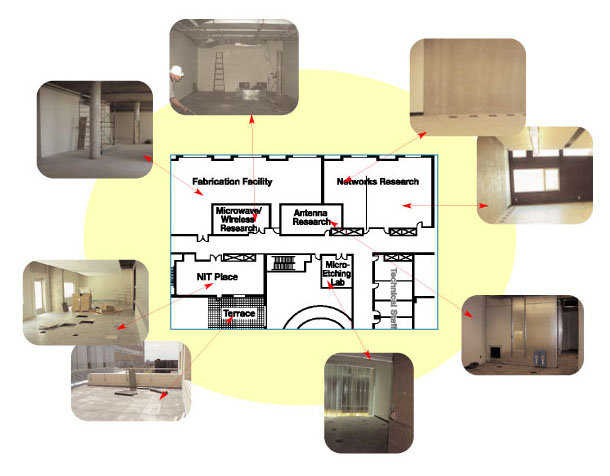
The Processing Lab
The Processing (Fabrication) Lab is one of the five labs which make up the Nortel Institute for Telecommunications Open Research Facility in the new Bahen Center for Information Technology. The primary activityin this Lab will be fabrication of microstructures, microelectronics and microdevices needed for advanced telecommunications research.
An intensive search and competition was undertaken to select a designer and builder for the Processing Lab. Using a 110 page conceptual design and engineering specification write-up (prepared by Totten Sims Hubicki Associates and University of Toronto Project Management) as the basis, proposals were received from companies in Canada and the United States. The project reached a major milestone with the award of the contract to Microzone Corporation (Ottawa, Ontario).
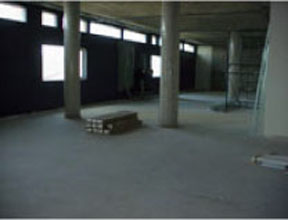
Some design features of the Processing Lab are the raised perforated floor and membrane ceiling grid to achieve unidirectional air flow from top to bottom and dual extra-large wet chemistry work benches to give researchers plenty of room to work in. As well the lab services such as nitrogen gas, compressed air, RO/deionized water, vacuum, cooling water, chemical and gas storage will all be self-contained to the lab. A visit to the site of the future lab reveals that the windows, drywall, air supply ducts, exhaust ducts, dedicated electrical transformers and distribution panels are in place. With the shell of the Lab ready for construction, one of the first things that will happen will be an extensive cleanup of the bare concrete floor and the walls, followed by sealing and painting of the surfaces. Then the raised floor, installation of duct work, walls, ceiling and lab services will follow.
During cleanroom construction, which will take place through the summer, there will be a huge move-in of very specialized and delicate equipment into the other four Labs (Microwave/Wireless, Antenna, Networks, and Microetching) that make up the Open Research Facility. We look forward with great anticipation to the opening of all of the Institute’s new research facilities in the Fall.
"NIT
would like to acknowledge and thank Gennum Corporation
(http://www.gennum.com)
for their kind donation
of
used equipment for the Processing Lab. ”
The
Bahen Center for Information Technology -
the
home of the NIT Open Research Facilities
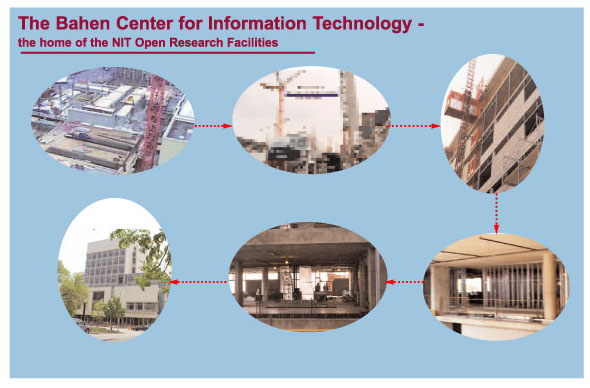
Tributes to Provost Adel Sedra
Tributes
to Professor Adel Sedra on his retirement
as Provost and Co-chair of the NIT Advisory Council
Adel is indeed someone the NIT owes its presence to. His guiding hands and spirit took the NIT through the conception, the structuring, the formation, and the formal establishment stages. His personal involvement in NIT’s positioning, in defining its mission, and in designing its growth strategy defined what NIT is today. He oversaw NIT evolving through several turning points, and was a powerful guiding light and inspiration to all of us who were involved in the NIT establishment.
Jimmy
Xu Inaugural Director
Nortel
Institute for Telecommunications
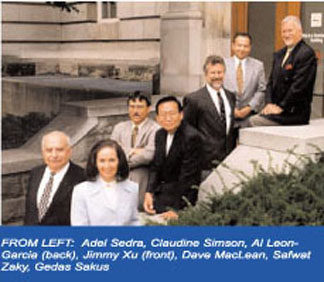
I remember with fond memories Adel Sedra and his efforts to create a world class telecommunications institute at U of T. When we established The Nortel Institute for Telecommunications at the University of Toronto, I had the privilege to co-chair our Board Meetings with Adel. He had a marvelously polite yet firm way to set the strategy of our undertakings, to obtain Government matching funds, to create the Masters Program in Telecom, and to obtain the right talent for our junior and senior chairs. He was a skillful executive with a keen sense of ethics, and a drive for excellence and professionalism. It was a pleasure to spend a morning with him in his office, once a quarter, while we were laying the early foundations for the Institute. Nortel Networks was lucky to have Adel on the launch pad at that time.
Gedas
A. Sakus Retired President of Technology
Nortel
Networks
I have the privilege to have been associated with Adel for over 15 years, the first time via ITRC (that later became CITO). Adel was already at the time THE authority in Integrated Circuits Technology, and an ECE internationally acclaimed expert. When we decided to bring our partnership with the University of Toronto to another level and establish the Nortel Institute for Telecommunications, our relationship reached an all-time high. Adel was a very supportive guiding light and inspiration for all of us, and he was personally involved in finalizing our mission, attracting the best faculty to the Institute’s endowed chairs and ensuring that appropriate investment funds were provided. Under such a leadership, the Institute did flourish and became, I believe, the Canadian model for true industry-university partnership. I had the honour to co-chair the Institute’s Advisory Board meetings with Adel after Gedas Sakus retired, and I must say that I saw in Adel the role model for exemplary leadership, strong business ethics, and continued search for excellence in everything we do. Our regular meetings were very open and effective, with a strong sense of camaraderie. With an eternal smile on his face, Adel is very approachable, always looking at the bright side of life and ready for a good joke, proving that you can be a very successful and firm executive with a nice personality and a strong sense of humour.
Claudine
Simson
Retired Vice-President, Global External Research
Nortel
Networks
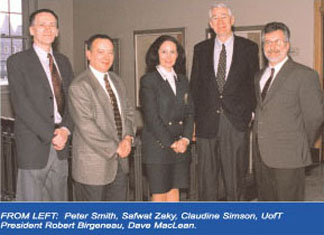
Thanks to the foresight and vision of Adel Sedra and the others who contributed in various ways to the creation of the Nortel Institute for Telecommunications of the University of Toronto (NIT), we have today a strong institute that has continued to grow and develop even in these difficult times for the telecommunications industry. Our new Open Research Facility laboratories in the Bahen building will open later this year, and will serve as a lasting monument to the vision of these founders. With the help of our growing number of government and industry partners, we at NIT will strive to fulfill its mission of providing global leadership in advanced information technology and telecommunications research, innovation, education, and training.
Peter
W. E. Smith Director
Nortel
Institute for Telecommunications
NIT is Open for Partnerships…
NIT is an Institute of the University of Toronto, named for our inaugural partner, Nortel Networks. It is a model for effective and creative partnerships among government, industry, and academia.
We actively seek participation from public and private sector organizations and companies, not only to accelerate technology transfer, but also to ensure that our programs are consistent with and useful to our industrial partners. Together, we conduct research, award scholarships, present seminars and workshops and train tomorrow’s innovators.
NIT industrial partnerships create mutually beneficial two-way exchanges of information, ideas and people. These partnerships are also highly effective in pooling state-of-the-art technical resources.
For more information
If you are interested in
learning more about NIT and how your organization mightbenefit from collaborating
with us, please contact the Institute Director, Professor Peter Smith at
(416) 978-1646, or by e-mail at dir.ni@utoronto.ca.
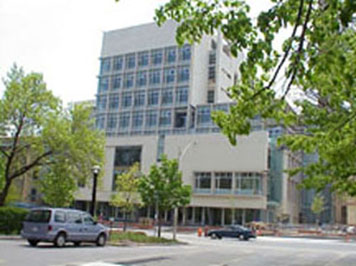
Benefits of Partnering with NIT
- Competitive advantage. Companies engaged in collaborative research with us reap the benefits of accelerated technology transfer.
- Open Research Facility. NIT's Open Research Facility, which includes cutting-edge cleanrooms, testbeds and processing facilities within the $105 million Bahen Centre for Information Technology, is available to our affiliates on a preferred-use basis.
- Enhanced visibility. Association with an innovative and dynamic Institute at Canada's top-ranked university provides our affiliates with a higher profile in the IT sector. For example, a testbed named for the donor organization brings long-lasting recognition for your company.
- University-wide impact and reach. Because NIT is a cross-faculty unit of the university, our industrial affiliates' reach spans all departments relevant to the advancement of telecommunication technologies.
- Facilitating strategic alliances. NIT industrial affiliates have opportunities to network with business and government leaders.
- Human resources. Affiliates gain access to top-notch graduates from all university departments associated with IT industries.
- Leveraging potential. Through a number of government programs, our industrial affiliates' investments can be leveraged for maximum impact.
- Tax benefits. There can be significant corporate financial incentives for interactions with the University community.
NIT Researchers in the News...
- Professor
Stewart Aitchison, Nortel Institute Chair for Emerging Technologies
- Attracting more than $18 million in provincial and federal funds to promote innovation, matched by private-sector partners.
- Supporting the education of graduate and undergraduate students through direct financial support, establishing the MET program, and creating two new endowed professorial positions.
- Establishing a leading-edge Open Research Facility in the new Bahen Information Technology Centre.
- Initiating the NIT Associates program, now funding 15 researchers across the university.
- Creating the Canada-France Bilateral Initiative in Molecular Photonics and Plastic Electronics.
Elected as a fellow of the Institute of Physics (London) in September 2001.
Invited to be a member of the Technical Advisory Panel for the IEE Photonics Network.
A member of the “Nonlinear
optical phenomena in condensed matter” program committee for the European
Quantum Electronic Conference EQEC 2003.
Professor Ted Sargent, Nortel Networks - Canada Research Chair in Emerging Technologies
CIRA’s
Young Explorers Prize - from the Canadian Institute for Advanced Research
Professor Sargent was selected
as one of Canada’s Young Explorers, and at 28 he is the youngest member
of the group... “for groundbreaking research in applying new phenomena
and materials from nanotechnology towards transforming fibre-optic communications
systems into agile optical networks.”
2002
Outstanding Engineer Award of IEEE Canada
He won the 2002 Outstanding
Engineer Award of IEEE Canada... “to recognize a member of IEEE Canada
who, through his/her technical and professional abilities, has made an
outstanding contribution to the Electrical Engineering professions.”
NIT Undergraduate Scholar 2001-2002
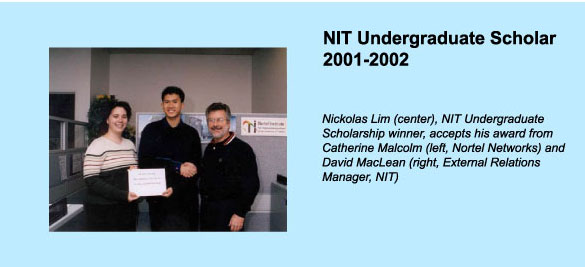
NIT
is proud of its achievements to date, including:
